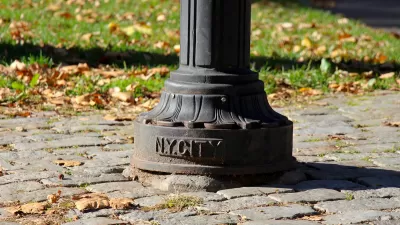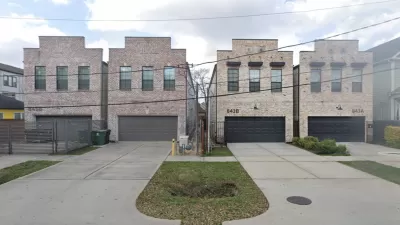In many rural and suburban Washington state communities, children who walk or bike to school don’t have access to safe, adequate pedestrian facilities.

Only 12 percent of Washington state’s K-8 students walk or bike to school, but of the students who do, many don’t have access to safe sidewalks, reports Mike Lindblom in The Seattle Times.
As Lindblom explains, “U.S. schools are often built on the suburban fringe, where formerly rural roads aren’t next to housing, or aren’t equipped with sidewalks or trails. More parents drive, which adds traffic, which makes the area more hostile to pedestrians.” In Washington State, “Residential sprawl, along with the desire to place campuses on large, inexpensive parcels, tends to result in sites distant from neighborhoods, or along high-speed rural roads.”
The article describes several examples of neighborhoods where parents and school administrators have identified dangerous routes. According to Lindblom, “There’s no database of inadequate school zones, but one barometer is that 165 school projects applied for state grants.” A $35 million state school routes fund received $200 million worth of requests from local communities. “Move Ahead Washington, the $17 billion package passed last year by the Legislature, is supposed to double the school safe routes fund, by adding $290 million through 2037. Pedestrian safety of all kinds will receive $1.1 billion, primarily financed by carbon taxes.”
FULL STORY: Where WA schoolchildren walk next to busy traffic

Alabama: Trump Terminates Settlements for Black Communities Harmed By Raw Sewage
Trump deemed the landmark civil rights agreement “illegal DEI and environmental justice policy.”

Planetizen Federal Action Tracker
A weekly monitor of how Trump’s orders and actions are impacting planners and planning in America.

The 120 Year Old Tiny Home Villages That Sheltered San Francisco’s Earthquake Refugees
More than a century ago, San Francisco mobilized to house thousands of residents displaced by the 1906 earthquake. Could their strategy offer a model for the present?

In Both Crashes and Crime, Public Transportation is Far Safer than Driving
Contrary to popular assumptions, public transportation has far lower crash and crime rates than automobile travel. For safer communities, improve and encourage transit travel.

Report: Zoning Reforms Should Complement Nashville’s Ambitious Transit Plan
Without reform, restrictive zoning codes will limit the impact of the city’s planned transit expansion and could exclude some of the residents who depend on transit the most.

Judge Orders Release of Frozen IRA, IIJA Funding
The decision is a victory for environmental groups who charged that freezing funds for critical infrastructure and disaster response programs caused “real and irreparable harm” to communities.
Urban Design for Planners 1: Software Tools
This six-course series explores essential urban design concepts using open source software and equips planners with the tools they need to participate fully in the urban design process.
Planning for Universal Design
Learn the tools for implementing Universal Design in planning regulations.
Clanton & Associates, Inc.
Jessamine County Fiscal Court
Institute for Housing and Urban Development Studies (IHS)
City of Grandview
Harvard GSD Executive Education
Toledo-Lucas County Plan Commissions
Salt Lake City
NYU Wagner Graduate School of Public Service





























